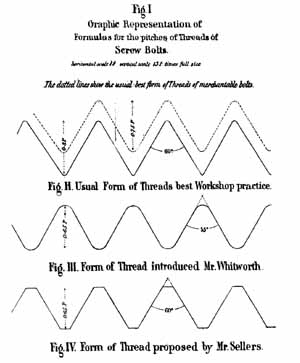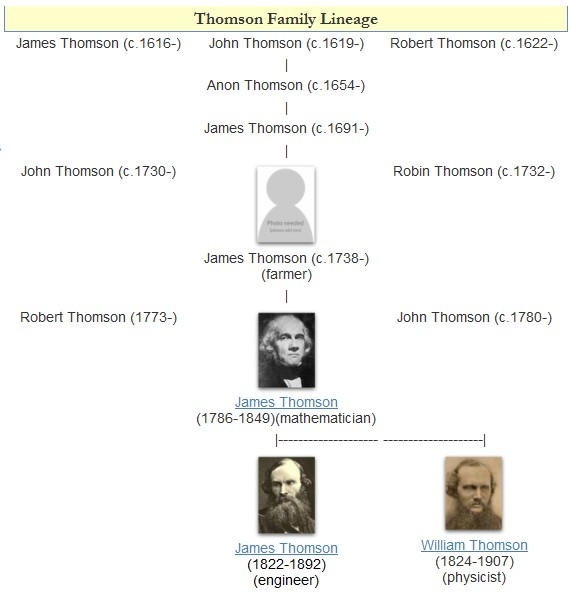|
IEC
The International Electrotechnical Commission (IEC; ) is an international standards organization that prepares and publishes international standards for all electrical, electronic and related technologies. IEC standards cover a vast range of technologies from power generation, transmission and distribution to home appliances and office equipment, semiconductors, fibre optics, batteries, solar energy, nanotechnology, and marine energy, as well as many others. The IEC also manages four global conformity assessment systems that certify whether equipment, system or components conform to its international standards. All electrotechnologies are covered by IEC Standards, including energy production and distribution, electronics, magnetics and electromagnetics, electroacoustics, multimedia, telecommunications and medical technology, as well as associated general disciplines such as terminology and symbols, electromagnetic compatibility, measurement and performance, dependability, des ... [...More Info...] [...Related Items...] OR: [Wikipedia] [Google] [Baidu] |
Electropedia
The International Electrotechnical Vocabulary (IEV) is a managed list of terms and definitions organized by the International Electrotechnical Commission (IEC), which is grouped in classes. It serves to promote the global unification of terminology in the field of electrotechnology, electronics and telecommunications. It is developed by the IEC Technical Committee 1 (Terminology), and published as both the IEC 60050 series of standards and online as the ''Electropedia''. The ''Electropedia'' database contains English and French definitions for more than 22 000 concepts, and provides terms in up to 18 other languages. Structure The IEV entries are categorised in 9 classes, which group the vocabulary into several subject areas. The names of the classes are as follows: * Class 1: General concepts * Class 2: Materials * Class 3: Measurement, automatic control * Class 4: Electric equipment * Class 5: Electronic equipment * Class 6: Generation, transmission and distribution ... [...More Info...] [...Related Items...] OR: [Wikipedia] [Google] [Baidu] |
Weber (unit)
In physics, the weber ( ; symbol: Wb) is the unit of magnetic flux in the International System of Units (SI). The unit is derived (through Faraday's law of induction) from the relationship (volt-second). A magnetic flux density of 1 Wb/m2 (one weber per square metre) is one tesla. The weber is named after the German physicist Wilhelm Eduard Weber (1804–1891). Definition The weber may be defined in terms of Faraday's law, which relates a changing magnetic flux through a loop to the electric field around the loop. A change in flux of one weber per second will induce an electromotive force of one volt (produce an electric potential difference of one volt across two open-circuited terminals). Officially: That is: \mathrm = \mathrm\mathrm. One weber is also the total magnetic flux across a surface of one square meter perpendicular to a magnetic flux density of one tesla; that is, \mathrm = \mathrm\mathrm^2. Expressed only in SI base units, 1 weber is: \mathrm = ... [...More Info...] [...Related Items...] OR: [Wikipedia] [Google] [Baidu] |
Standards Organization
A standards organization, standards body, standards developing organization (SDO), or standards setting organization (SSO) is an organization whose primary function is developing, coordinating, promulgating, revising, amending, reissuing, interpreting, or otherwise contributing to the usefulness of technical standards to those who employ them. Such an organization works to create uniformity across producers, consumers, government agencies, and other relevant parties regarding terminology, product specifications (e.g. size, including units of measure), protocols, and more. Its goals could include ensuring that Company A's external hard drive works on Company B's computer, an individual's blood pressure measures the same with Company C's sphygmomanometer as it does with Company D's, or that all shirts that should not be ironed have the same icon (a clothes iron crossed out with an X) on the label. Most standards are voluntary in the sense that they are offered for adoption by people ... [...More Info...] [...Related Items...] OR: [Wikipedia] [Google] [Baidu] |
International Electrical Congress
The International Electrical Congress was a series of international meetings, from 1881 to 1904, in the then new field of applied electricity. The first meeting was initiated by the French government, including official national representatives, leading scientists, and others. Subsequent meetings also included official representatives, leading scientists, and others. Primary aims were to develop reliable standards, both in relation to electrical units and electrical apparatus. Historical background In 1881, both within and across countries, different electrical units were being used. There were at least 12 different units of electromotive force, 10 different units of electric current and 15 different units of resistance. A number of international Congresses were held, and sometimes referred to as International Electrical Congress, Electrical Conference, and similar variations. Secondary sources make different judgments about how to classify the Congresses. In this article, the Con ... [...More Info...] [...Related Items...] OR: [Wikipedia] [Google] [Baidu] |
International System Of Electrical And Magnetic Units
The International System of Electrical and Magnetic Units is an obsolete system of units used for measuring electrical and magnetic quantities. It was proposed as a system of practical international units (e.g., the international ampere, the international ohm, the international volt) by unanimous recommendation at the International Electrical Congress (Chicago, 1893), discussed at other Congresses, and finally adopted at the International Conference on Electric Units and Standards in London in 1908. It was rendered obsolete by the inclusion of electromagnetic units in the International System of Units (SI) at the 9th General Conference on Weights and Measures in 1948. Earlier systems The link between electromagnetic units and the more familiar units of length, mass and time was first demonstrated by Carl Friedrich Gauss in 1832 with his measurement of the Earth's magnetic field, and the principle was extended to electrical measurements by Franz Ernst Neumann in 1845. A complete s ... [...More Info...] [...Related Items...] OR: [Wikipedia] [Google] [Baidu] |
William Thomson, 1st Baron Kelvin
William Thomson, 1st Baron Kelvin (26 June 182417 December 1907), was a British mathematician, Mathematical physics, mathematical physicist and engineer. Born in Belfast, he was the Professor of Natural Philosophy (Glasgow), professor of Natural Philosophy at the University of Glasgow for 53 years, where he undertook significant research on the mathematical analysis of electricity, was instrumental in the formulation of the first and second laws of thermodynamics, and contributed significantly to unifying physics, which was then in its infancy of development as an emerging academic discipline. He received the Royal Society's Copley Medal in 1883 and served as its President of the Royal Society, president from 1890 to 1895. In 1892, he became the first scientist to be elevated to the House of Lords. Absolute temperatures are stated in units of kelvin in Lord Kelvin's honour. While the existence of a coldest possible temperature, absolute zero, was known before his work, Kelvin d ... [...More Info...] [...Related Items...] OR: [Wikipedia] [Google] [Baidu] |
Giovanni Giorgi
Giovanni Giorgi (November 27, 1871 – August 19, 1950) was an Italian physicist and electrical engineer who proposed the ''Giorgi system'' of measurement, the precursor to the International System of Units (SI). Early life Giovanni Giorgi was born in Lucca on November 27, 1871. Career Giorgi studied engineering at the Institute of Technology of Rome, he worked at Fornaci Giorgi in Ferentino, then was the director of the Technology Office of Rome between 1905 and 1924. He also taught at the University of Rome between 1913 and 1939. During World War II he moved to Ferentino. He was an Invited Speaker of the ICM in 1924 in Toronto, in 1928 in Bologna, and in 1932 in Zurich. Personal life He was engaged to Laura Pisati, his former master's student who became the first woman invited to deliver a lecture at the fourth International Congress of Mathematicians (ICM), but she died in 1908 shortly before both her talk and their intended wedding. Death Giorgi died on August 19, 1950 ... [...More Info...] [...Related Items...] OR: [Wikipedia] [Google] [Baidu] |
Hertz
The hertz (symbol: Hz) is the unit of frequency in the International System of Units (SI), often described as being equivalent to one event (or Cycle per second, cycle) per second. The hertz is an SI derived unit whose formal expression in terms of SI base units is 1/s or s−1, meaning that one hertz is one per second or the Inverse second, reciprocal of one second. It is used only in the case of periodic events. It is named after Heinrich Hertz, Heinrich Rudolf Hertz (1857–1894), the first person to provide conclusive proof of the existence of electromagnetic waves. For high frequencies, the unit is commonly expressed in metric prefix, multiples: kilohertz (kHz), megahertz (MHz), gigahertz (GHz), terahertz (THz). Some of the unit's most common uses are in the description of periodic waveforms and musical tones, particularly those used in radio- and audio-related applications. It is also used to describe the clock speeds at which computers and other electronics are driven. T ... [...More Info...] [...Related Items...] OR: [Wikipedia] [Google] [Baidu] |
Gauss (unit)
The gauss (symbol: , sometimes Gs) is a unit of measurement of magnetic induction, also known as magnetic flux density. The unit is part of the Gaussian units, Gaussian system of units, which inherited it from the older centimetre–gram–second system of units#Electromagnetic units .28EMU.29, centimetre–gram–second electromagnetic units (CGS-EMU) system. It was named after the German mathematician and physicist Carl Friedrich Gauss in 1936. One gauss is defined as one maxwell (unit), maxwell per square centimetre. As the centimetre–gram–second system of units (cgs system) has been superseded by the International System of Units (SI), the use of the gauss has been deprecated by the standards bodies, but is still regularly used in various subfields of science. The SI unit for magnetic flux density is the Tesla (unit), tesla (symbol T), which corresponds to . Name, symbol, and metric prefixes Although not a component of the International System of Units, the usage of the g ... [...More Info...] [...Related Items...] OR: [Wikipedia] [Google] [Baidu] |
International Electrotechnical Commission - Central Office - Geneva
International is an adjective (also used as a noun) meaning "between nations". International may also refer to: Music Albums * ''International'' (Kevin Michael album), 2011 * ''International'' (New Order album), 2002 * ''International'' (The Three Degrees album), 1975 *''International'', 2018 album by L'Algérino Songs * The Internationale, the left-wing anthem * "International" (Chase & Status song), 2014 * "International", by Adventures in Stereo from ''Monomania'', 2000 * "International", by Brass Construction from ''Renegades'', 1984 * "International", by Thomas Leer from ''The Scale of Ten'', 1985 * "International", by Kevin Michael from ''International'' (Kevin Michael album), 2011 * "International", by McGuinness Flint from ''McGuinness Flint'', 1970 * "International", by Orchestral Manoeuvres in the Dark from '' Dazzle Ships'', 1983 * "International (Serious)", by Estelle from '' All of Me'', 2012 Politics * Internationalism (politics) * Political international, ... [...More Info...] [...Related Items...] OR: [Wikipedia] [Google] [Baidu] |


